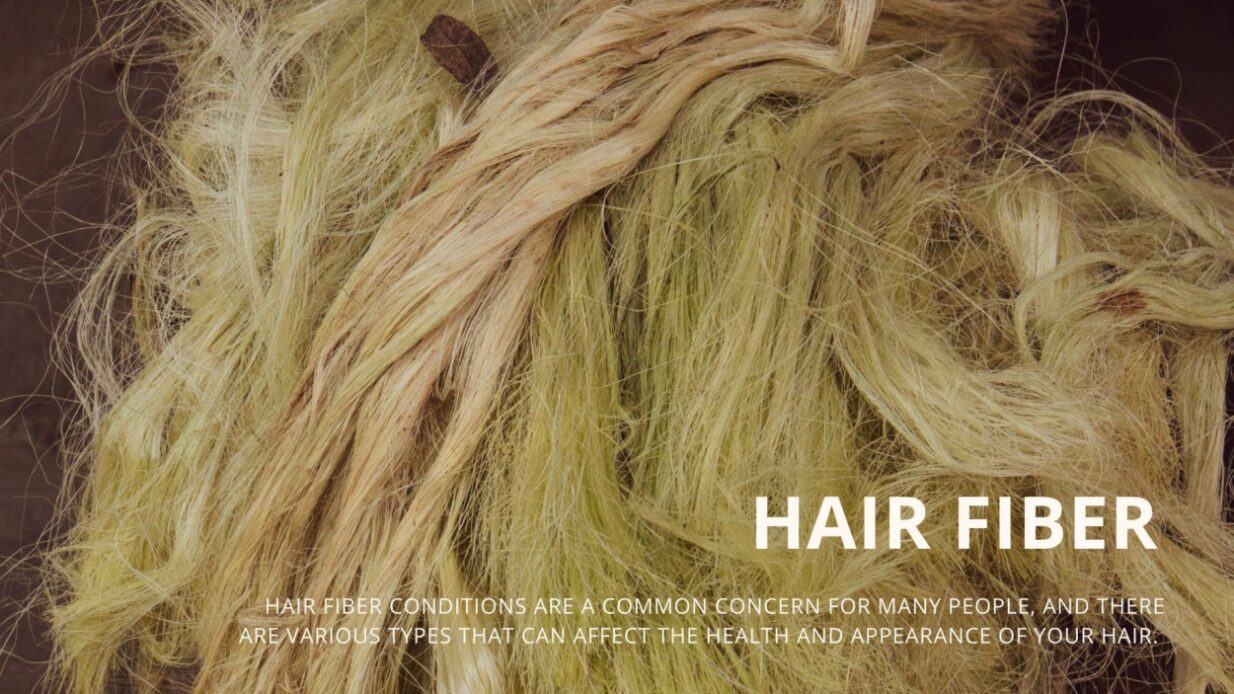Hair Fiber Conditions
Hair fiber conditions are a common concern for many people, and there are various types that can affect the health and appearance of your hair. Here are some of the most common hair fiber conditions you should be aware of:
-
Split Ends: Split ends occur when the protective outer layer of the hair shaft splits into two or more parts, causing the hair to become frizzy and brittle. This can be caused by excessive heat styling, chemical treatments, or simply aging.
-
Breakage: Breakage occurs when hair strands snap or break off due to damage to the hair fiber. This can be caused by using high heat styling tools, chemical treatments, tight hairstyles, or hair extensions.
-
Dryness: Dry hair occurs when the scalp does not produce enough natural oils to moisturize the hair. This can lead to hair that is brittle, frizzy, and prone to breakage.
-
Dullness: Dull hair lacks shine and luster, making it appear lifeless and lackluster. This can be caused by a buildup of dirt, oil, and styling products on the hair shaft.
-
Frizziness: Frizzy hair occurs when the hair shaft becomes rough and porous, causing the hair to stand away from the scalp in an uncontrolled manner. This can be caused by dryness, humidity, or using the wrong products.
To prevent and treat these hair fiber conditions, it is important to adopt a healthy hair care routine that includes regular shampooing, conditioning, and deep conditioning treatments. You should also avoid harsh chemical treatments, high heat styling tools, and tight hairstyles that can cause damage to your hair. Additionally, be sure to use high-quality, moisturizing hair care products that are specifically designed for your hair type and concerns.
In conclusion, hair fiber conditions can significantly impact the health and appearance of your hair, but with proper care and attention, they can be prevented and treated.
The Different Hair Fiber Disorders
- Monilethrix: A rare genetic disorder characterized by brittle, circular hair shafts that break easily.
- Trichonodosis: Also known as "rat tail," is a hair fiber disorder characterized by the appearance of thin, cylindrical, and slow-growing hair that resembles the tail of a rat.
- Trichothiodystrophy (TTD): is a rare genetic disorder that affects the structure and quality of the hair shaft, causing it to be brittle, sulfur-deficient, and prone to breaking easily.
- Canities: Also known as graying of the hair, is a normal part of aging characterized by the gradual loss of pigment in the hair follicles, resulting in the appearance of gray or white hair.
- Trichorrhexis Nodosa is where cuticle cells become damaged due to chemical or physical trauma, which causes the cortical cells to splay out and form nodes. These nodes are usually very weak and allow for the hair to break easily at these points.
- Trichoclasis is hair breakage that is seen as a clean fracture across the hair fiber.
- Trichoptilosis describes the longitudinal splitting of the hair shaft. It is also called split ends. This condition is also caused by chemical or physical trauma.
- Trichoclasis is hair breakage that is seen as a clean fracture across the hair fiber.
- Plica Polonica is where the hair irreversibly tangles and is matted together; usually due to poor grooming (unwashed hair for considerable length of time).
- Traction Alopecia: Breakage can occur due to chemical overprocessing and/or incorrect styling, drying, or brushing.
It is important to seek professional medical treatment for hair fiber disorders, as early diagnosis and treatment can improve the outcome and prevent permanent hair loss. In some cases, hair transplant surgery may be an option for restoring hair growth.

